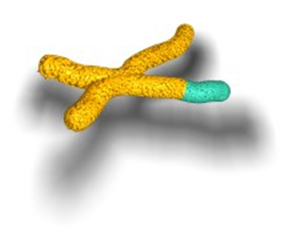
Reciprocal translocations (an exchange of two terminal segments from different chromosomes) and Robertsonian translocations have been reported to occur in one in every 500 live births.
Carriers of these balanced translocations are generally phenotypically normal, as there is no net loss of genetic material, but may be detected when the couple presents with infertility or recurrent pregnancy loss.
In addition, balanced translocations may be discovered when there is a phenotypically-abnormal offspring arising from the production of genetically-unbalanced gametes (Kanavakis, 2002; Braude, et al., 2002).
A member of a couple may carry a balanced translocation. This increases the risk for a pregnancy with an unbalanced chromosome complement, which can cause birth defects, mental retardation, and/or miscarriage.
The primary aim of PGD for translocation determination is to improve live birth rates by either reducing the risk of recurrent spontaneous abortions or to improve pregnancy rate in infertile couples (e.g., after failed IVF attempts).
Success rates reported from three large centers (two in the United States, one in Italy) report an overall pregnancy rate of 29% per oocyte retrieval, increasing to 38% when calculated per embryo transfer.
Braude et al. (2002) indicate in a review of the published, peer-reviewed, scientific literature that there is insufficient evidence supporting the use of PGD for the detection of chromosomal translocations as a method to improve live birth rates; or to reduce the risk of pregnancy loss in women of advanced maternal age (age 35 or older), in women with repeat IVF failures, or in women with recurrent spontaneous abortions.